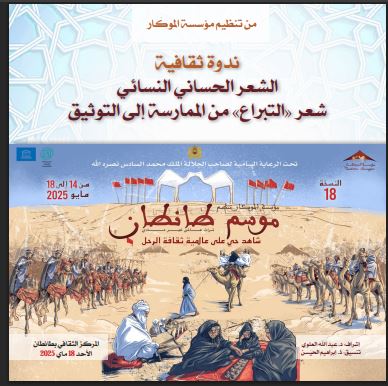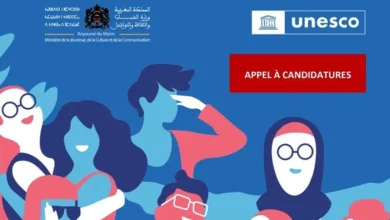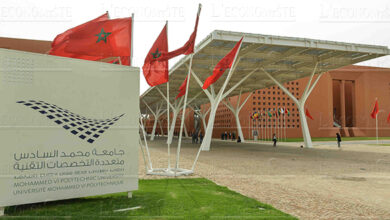The Feminine Hassani Poetry Celebrated at the 18th Edition of the Tan-Tan Moussem 2025

The Al Mokar Foundation is organizing a scientific and cultural conference titled “Hassaniya Poetry: The Tebraî, from Practice to Documentation” on Sunday, May 18, 2025, at 6:00 PM at the Tan-Tan Cultural Centre. This event coincides with the Moussem of Tan-Tan, held under the High Patronage of His Majesty King Mohammed VI, God assist him. The Moussem will take place from May 14 to 18, 2025, under the slogan: “The Moussem of Tan-Tan: A Living Witness to the Universality of Nomadic Culture.”
Moderated by Hassaniya culture researcher Aazza Beyrouk, this cultural gathering will bring together several poets and researchers in Hassaniya literature from the region. They will discuss the “tebraî,” a Saharan feminine poetic form, aiming to raise awareness and highlight its expressive, symbolic, and aesthetic dimensions while formulating recommendations to preserve and safeguard this unique poetic genre from oblivion and disappearance.
Among the speakers is poet Khadija Laabid, who will address “Innovation in Tebraî Poetry,” alongside Hassaniya culture researcher Aziza Aakida, who will present a talk titled “The Tebraî: A Hassaniya Creation Marked by Uniqueness.”
Poet and researcher Taher Khneibila will discuss “Semantic Density and Poetic Imagery in the Art of Tebraî,” while poet Oum El Fadl Ma El Aïnine will explore the theme “The Tebraî Between the Sayable and the Unsayable.” Poet Abdellah El Hamel will contribute an analysis titled “Hassaniya Women’s Poetry Between Past and Present: Its Impact on Society and the Poetic Elite.”
It is important to note that the “tebraî” is a type of popular oral poetry exclusively composed by Saharan women. It consists of poetic verses expressing feelings of love towards men, set in a strictly private context, imbued with discretion due to codes of modesty, reserve, and the social pressures exerted by traditions and tribal taboos.
The “tebraî” is characterized by its linguistic simplicity and symbolic nature. It follows a metrical structure with a single rhyme for its two hemistichs. There is a distinction between an ancient form, marked by modesty and enigma, and a more recent form that is explicit, direct, and rooted in contemporary social realities.





